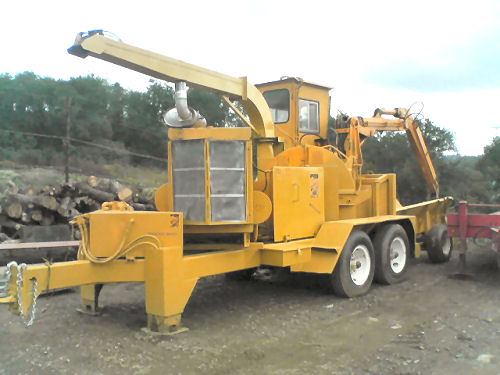Case Study: The Forestry (Logistics) Problem
Submitted: 3 Apr 2008
Application Areas: Logistics
Contents
Problem Description
Adapted from a real-world problem
A paper company own a number of mills that produce paper with different processes, e.g., the thermo-mechanical process (see
Figure 1), the cold caustic soda process, etc. They procure raw materials for each of their processing machines from a number of different suppliers.
Figure 1 Thermo-Mechanical Processing machine

Their suppliers consist of 3 forestry operations: Kaingaroa, NSW and Taupo. They also own a recycling plant where they receive waste paper.
They own mills at Kawerau (NZ), Boyer (Tasmania) and Albury (NSW). The following table summarises the processing machines at each mill:
The paper company purchases three types of raw materials: woodchips, pulp logs and waste paper. The thermo-mechanical, refiner-mechanical and cold caustic soda processes use woodchips, the stone groundwood process uses pulp logs and the recycled fibre process uses waste paper. The requirements (in tonnes) for their different machines are given below:
The supplies of the various raw material is given in the following table:
The transportation cost of the raw materials is given in the following table:
| $100/tonne of material |
Kawerau |
Boyer |
Albury |
| Kaingaroa |
4 |
10 |
8 |
| NSW |
12 |
6 |
3 |
| Taupo |
5 |
10 |
7 |
| Recycling Plant |
7 |
11 |
10 |
Note that pulp logs can be "chipped" into woodchips (see
Figure 2) at the suppliers at a cost of $250/tonne and that waste paper can be "compacted" into woodchips at the recycling plant at a cost of $600/tonne. Any excess waste paper that is not used must be disposed of at a cost of $150/tonne.
Figure 2 Wood chipper

The paper company want to know how to supply their mills at minimum cost.
For more detail see
Supply Chain Optimisation in the Paper Industry, Philpott and Everett
.
Return to top
Extra for Experts
You can solve the Forestry Problem by creating the appropriate data file for
transportation.mod (
Hint the nodes are a pair consisting of the location and raw material). Rather than create a data file for
transportation.mod by hand you can read in the data provided and generate the appropriate data file using a script file.
The model file
forestry_expert.mod creates the AMPL structures and the data file
forestry_expert.dat specifies the data for the Forestry Problem. Using these two files, we can create the supply nodes, demand nodes, supply parameters, etc as shown in the following
loops:
# Create the supply nodes
let SUPPLY_NODES := {};
let {i in SUPPLIERS, m in MATERIALS}
SUPPLY_NODES := SUPPLY_NODES union {(i & '-' & m)};
# Create the demand nodes
let DEMAND_NODES := {};
let {(j, k) in DEMANDS, m in MATERIALS}
DEMAND_NODES := DEMAND_NODES union {(j & '-' & k & '-' & m)};
# Create the supplies
let {i in SUPPLIERS, m in MATERIALS}
Supply[(i & '-' & m)] := MaterialSupply[i, m];
Return to top
Student Tasks
- Solve the Forestry Problem. Write a management summary of your solution.
Hint You can use
transportation.mod and transportation.run (with the necessary data file inserted) for this problem.
What to hand in Your model, data and script files. Your management summary.
- Experts Only Modify your script file from Task 1 so that it uses forestry_expert.mod and forestry_expert.dat to get the forestry data and then generates the data for
transportation.mod dynamically. Write a management summary of your solution.
What to hand in Your modified script file. Your management summary.
Return to top
 Their suppliers consist of 3 forestry operations: Kaingaroa, NSW and Taupo. They also own a recycling plant where they receive waste paper.
They own mills at Kawerau (NZ), Boyer (Tasmania) and Albury (NSW). The following table summarises the processing machines at each mill:
Their suppliers consist of 3 forestry operations: Kaingaroa, NSW and Taupo. They also own a recycling plant where they receive waste paper.
They own mills at Kawerau (NZ), Boyer (Tasmania) and Albury (NSW). The following table summarises the processing machines at each mill:
 The paper company want to know how to supply their mills at minimum cost.
For more detail see Supply Chain Optimisation in the Paper Industry, Philpott and Everett
The paper company want to know how to supply their mills at minimum cost.
For more detail see Supply Chain Optimisation in the Paper Industry, Philpott and Everett


